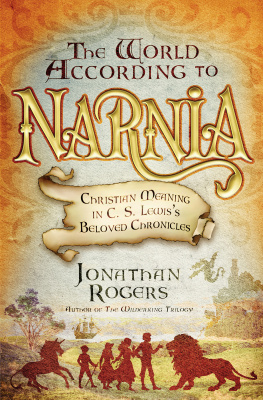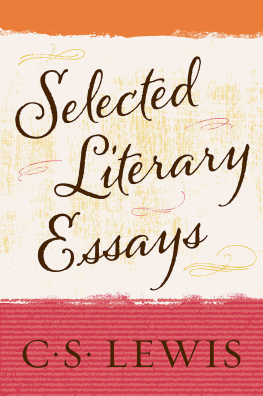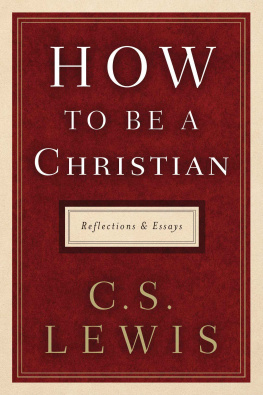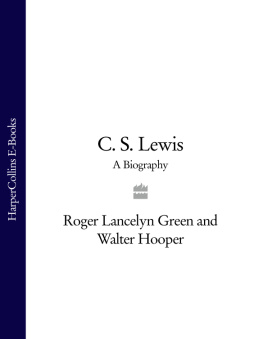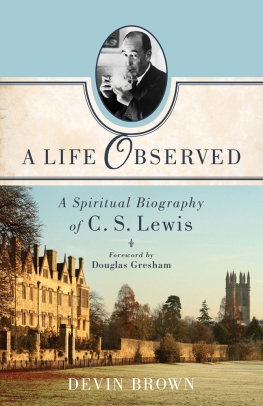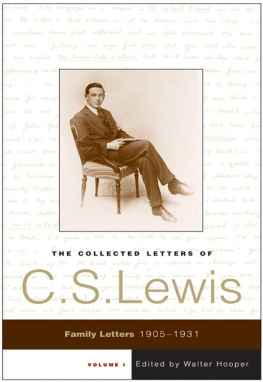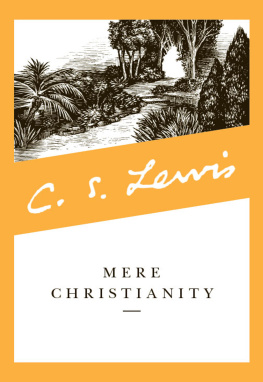Sommaire
Pagination de l'dition papier
Guide
Hansen Lectureship Series
C. S. Lewiss Dymer
in His Life and Work
Jerry Root
Includes Dymer: Wade Annotated Edition
Annotations by David C. Downing
InterVarsity Press
P.O. Box 1400, Downers Grove, IL 60515-1426
ivpress.com
2020 by The Marion E. Wade Center
Dymer 1926 C.S. Lewis Pte Ltd, published under license from The C.S. Lewis Company Ltd.
All rights reserved. No part of this book may be reproduced in any form without written permission from InterVarsity Press.
InterVarsity Pressis the book-publishing division of InterVarsity Christian Fellowship/USA, a movement of students and faculty active on campus at hundreds of universities, colleges, and schools of nursing in the United States of America, and a member movement of the International Fellowship of Evangelical Students. For information about local and regional activities, visit intervarsity.org.
Scripture quotations, unless otherwise noted, are from The Holy Bible, English Standard Version, copyright 2001 by Crossway Bibles, a division of Good News Publishers. Used by permission. All rights reserved.
The publisher can't verify the accuracy of website hyperlinks beyond the date of print publication.
Cover design and image composite: David Fassett
Cover image of C.S. Lewis (ca. 1918) used by permission of the Marion E. Wade Center, Wheaton College, IL.
Images: paper texture Katsumi Murouchi / Moment Collection / Getty Images
grunge paper texture hudiemm / E+ / Getty Images
ISBN 978-0-8308-5529-2 (digital)
ISBN 978-0-8308-5375-5 (print)
This digital document has been produced by Nord Compo.
TO MY BROTHER JIMMY ROOT,
WHO AS A TEACHER AND COACH
HAS INVESTED HIS LIFE IN A GENERATION
OF YOUNG MEN AND WOMEN IN SCHOOLS IN
BOTH WATTS AND PALMDALE, CALIFORNIA.
HIS LIFE IS AN INSPIRATION TO ME.
It seemed to be the low voice of the world
Brooding alone beneath the strength of things,
Murmuring of days and nights and years unfurled
Forever, and the unwearied joy that brings
Out of old fields the flowers of unborn springs,
Out of old wars and cities burned with wrong,
A splendour in the dark, a tale, a song.
DYMER, CANTO V, STANZA 29
Acknowledgments
I WOULD LIKE TO THANK Walter and Darlene Hansen for the privilege of delivering the Hansen lectures at the Marion E. Wade Center at Wheaton Collegelectures given in honor of the memory of Ken and Jean Hansen. The very first night I ever spent in Wheaton, Illinois, in February 1980, was as a guest in Ken and Jeans home. The Hansen family has marked my life so frequently, and I am grateful. I would also like to acknowledge the late Christopher Mitchell, who first approached me about the possibility of delivering the Hansen lectures, and to thank Marjorie Lamp Mead for her encouragement to explore a fresh area of Lewis scholarship, which I found in Dymer. Furthermore, I am indebted to professors Jeff Davis, Mark Lewis, and Miho Nonaka for their responses after the lectures were delivered. My only regret about these presentations appearing in book form is that readers will never be able to enter into the absolute hilarity and good humor in which these responses were presented. I doubt I have ever laughed so loud in my life; it was great fun! I am also grateful to the staff at the Marion E. Wade Center at Wheaton College, without whose help these lectures and this book would never have come to the light of day: professors David and Crystal Downing, Marjorie Lamp Mead, Laura Schmidt, Mary Lynn Uitermarkt, Elaine Hooker, Aaron Hill, Shawn Mrakovich, and Hope Grant. Furthermore, I am grateful to the Rev. Dr. David McNutt of InterVarsity Press for working with me on the preparation of the manuscript for publication. Significant portions of these lectures were read and critiqued by the Mead men: the late Lon Allison, Walter Hansen, David Henderson, and Rick Richardson. I am deeply grateful to them for their critique and feedback. I am also grateful for critical insights that have come from other close friends: Dr. Tim Tremblay, and professors Robert Bishop, Jeff Davis, Mark Lewis, Peter Walters, and David Sveen. While studying Dymer I was impressed with the frequency of bird images in the text. I must acknowledge a debt therefore to Nadia Skolnitsky who opened my eyes to the significance of the avian portent imagery in Norse Mythology and its significance in Dymer. Of course, I remain constantly grateful to my wife, Claudia, for her reflections and comments on my work and to my sister, Kathy Hamlin, who first introduced me to the writings of C. S. Lewis. I am also in debt to Tim and Amy Lefever for granting me the opportunity to write and study at Bearings in Bodega Bay.
Dymer
Wade Annotated Edition
Annotations by
David C. Downing
Foreword
David C. Downing
C . S. LEWISS FIRST AND ONLY book-length narrative poem Dymer (originally published in 1926) was not a literary success. But it is a fascinating failure. Published five years before Lewiss conversion to Christianity in 1931, the poem is a promising bit of apprentice work for a young writer who hadnt yet discovered which medium was best for what he wanted to sayor indeed what it was that he truly wanted to say.
In his preface to the 1950 edition of Dymer (later reprinted in Narrative Poems), Lewis explained the origins of Dymer and how it can best be understood:
What I found what simply came to me was the story of a man who, on some mysterious bride, begets a monster: which monster, as soon as it has killed its father, becomes a god. This story arrived, complete, in my mind somewhere about my seventeenth year. To the best of my knowledge I did not consciously or voluntarily invent it, nor was it, in the plain sense of that word, a dream. All I know about it is that there was a time when it was not there, and then presently a time when it was. Everyone may allegorize it or psychoanalyse it as he pleases: and if I did so myself my interpretations would have no more authority than anyone elses.
Clearly, Lewis in his early years wanted to create a modern myth, similar to those he admired in George MacDonald and Franz Kafka. Lewis realized that most myths evolve gradually, the work of many voices over many centuries. But he believed there were also modern mythmakers, writers who could create archetypal patterns of events that transcended their actual choice of words in telling a story.
Lewis wrote a prose version of Dymer in 19161917, which has not survived. In 1918 he tried retelling the story in verse, taking his poetic form from Shakespeares Venus and Adonis. In this version, the poem was called The Redemption of Ask, after the first man named Ask, the Adam character in Norse mythology. Finally in 1922 Lewis recast the story in rhyme royal, a stanza form invented by Chaucer. This poetic form consists in seven-line stanzas of iambic pentameter, with end-rhymes of ABABBCC. Lewis finished the poem in 1925, and it was published by J. M. Dent in 1926.
Lewis was hoping that Dymer would launch his career as a poet, but it received more negative reviews than positive, and it quickly sank into oblivion. By the mid-1920s, modernist poetry was in vogue, so that traditional, metered poetry had become pass, especially narrative poems. The poem itself is uneven, beginning with overly obvious satire on planned societies, then plunging into several obscure episodes involving dream-like settings, murky characterizations, and portentous symbols. Towards the end, the poem becomes obvious again in its overt rejection of magic and occultism.



